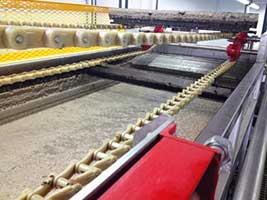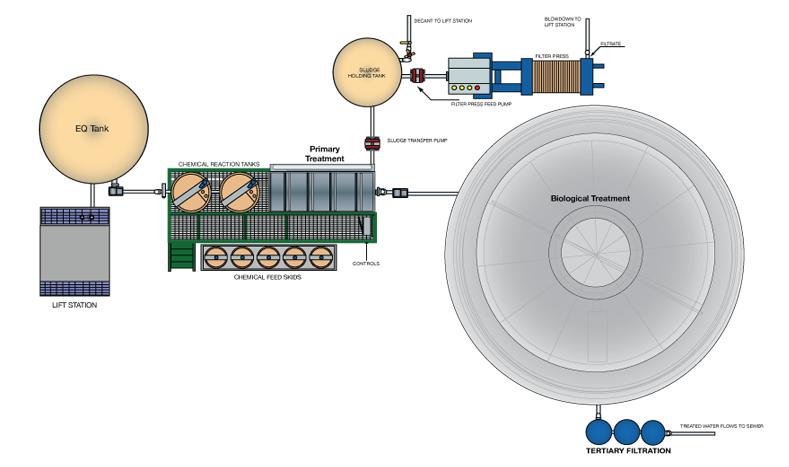Dairy Industry Wastewater Treatment 
Producing milk, butter, cheese, or yoghurt, using pasteurization or homogenization produces wastewater with high levels of BOD and COD loads and must be reduced before being disharged to municipal treatment facilities. Typical by-products include buttermilk, whey, and their derivatives. Large amounts of water are used during the process producing effluents containing dissolved sugars and proteins, fats, and possibly residues of additives.
These effluents have the following characteristics
- Biochemical oxygen demand (BOD), with an average ranging from 0.8 to 2.5 kilograms per metric ton (kg/t) of milk in the untreated effluent
- Chemical oxygen demand (COD), which is normally about 1.5 times the BOD level
- Total suspended solids (TSS), at 100–1,000 milligrams per liter (mg/l)
- Total dissolved solids (TDS): phosphorus (10–100 mg/l), and nitrogen (about 6% of the BOD level).
Cream, butter, cheese, and whey production are major sources of BOD in wastewater. The waste load equivalents of specific milk constituents are:
- 1 kg of milk fat = 3 kg COD
- 1 kg of lactose = 1.13 kg COD
- 1 kg protein = 1.36 kg COD
The wastewater may contain pathogens from contaminated materials or production processes. A dairy often generates odors and, in some cases, dust, which also need to be controlled. Ecologix Environmental Systems engineers and builds complete solutions to efficiently manage the wastewater treatment and odor control requirements of the dairy industry. Our solution includes the following benefits:
- Optimization of use of water and cleaning chemicals with option for recirculation of cooling waters.
- Segregation of effluents from sanitary installations, processing, and cooling (including condensation) systems; this would facilitate ability to recycle the wastewater.
- Energy recovery through use of heat exchangers for cooling and condensing.
- Use of high-pressure nozzles to minimize water usage.
The reuse of wastewater from the dairy industry can also be provided for by usage of adsorption and membrane separation among other processes. The color and the odor may be removed completely after activated carbon treatment. The pretreated water can be passed through a cross flow reverse osmosis membrane system and the permeate water can then be reused.


